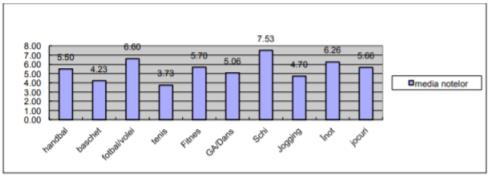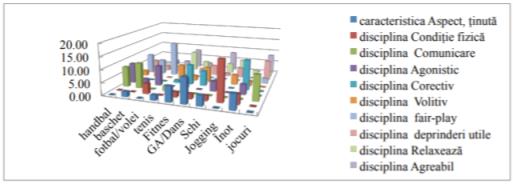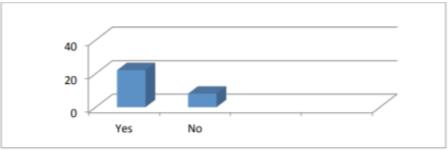Abstract
An informed student, is also interested in practicing motive activities, having also a diverse motivation: health, physical appearance, harnessing his own experience to strengthen his carrier on the labour market, developing the necessary capacity in order to gain `social success`, personal fulfillment, self-knowledge, self-discipline, and so on. Physical education in pre university period and later at university must offer students a wide range of options so they can accomplish the so called objective: continuously practice of motive activities during leisure time. We know that `sport training, that is done in one way or another throughout life, aims to make the child and later the adult able to choose the activity that suits him best, according to his needs and interests. Determining the stability of students` initial options taking into consideration the diversity of options based on the attractiveness expressed for those activities as a condition of constant interest for sport is the aim of this paperwork. For that, in academic year 2014-2015, I have decided to check the stability of initial choices, for a group of students at Economic Industrial Engineering specialty, from their first year of academic studies, planning various activities, different from a class to another. In this paperwork I have tried to find out how my students are eager to experience new things and how these new habits can modify their horizon of options.
Keywords: Options for motive activitiesstability; students at faculties with no sports and physical education profile
Introduction
When signing the contract with the faculty, the newly student is requested to choose a sport
discipline that he wants to practice in that academic year during the sports classes.
We know that `sport training, that is done in one way or another throughout life, aims to make the
child and later the adult able to choose the activity that suits him best, according to his needs and
interests.
,, Motric habitude is an acquisition which, ultimately, represents the adaptation to the
environment” ( Dragnea & Bota , 1999, p 158) .
Activities "outdoor education" acquires a particularly important role in the system of
extracurricular programs, subject to the further training of their students with special skills in terms of
knowledge, efficient and professional orientation as holding a lofty civic behavior (Moldovan, 2006, pp.
231-232)
In 2008, following studies of specialists in exercise and public health, in USA, is issued a
document specifying the amount, type and intensity of physical activity needed to achieve many health
benefits for Americans across the lifespan, source: https://health.gov/paguidelines/pdf/paguide.pdf.
Great variety of means working in motor activities of leisure can provide,, routes customized"
conducted carefully by specialists so that satisfaction of the moment to meet long-term benefits in terms
of health, efficiency in social, social success, by Bota (2007, pp. 89-90).
Young, gifted with skills and attitudes, competence, due to an objective need of training in the
context of a democratic society based on market economy, will be helped effectively in the current social
and virtual integration. Thus, the student is interested:
1. To capitalize his own experience to strengthen his carrier on the labour market;
2. To develop his integration ability to a group (family, professional environment, friends, etc.);
3. To develop the needed capabilities for `social success`;
4. Achieving personal fullfillment, a quality life and moral autonomy.
Adults have therefore, complex motivations for practicing sports as: ,,self - knowledge, self -
discipline, self - image, adequate physical shape, communicating with others, personal and professional
development, etc. " by Stancu (2004).
Therefore, at the beginning of the academic year, the group, consisting of 30 students is expressing
about 10-12 choices.
The aim of this Paperwork
Determining the stability of students initial options taking into consideration the diversity of
options based on the attractiveness expressed for those activities as a condition of constant interest for
sport.
Hypothesis of this Paperwork
-As motive luggage of the subject in discussion is more diversified, his options will be more stable
and intense.
-Students are eager to experience new sports activities.
observation, scientific documentation, questionnaire survey, statistical and graphical method.
Work Methodology
For the academic year 2014-2015, I have decided to check the stability of initial choices, for a
group of students at Economic Industrial Engineering speciality, from their first year of academic studies,
planning various activities, different from a class to another. I have taken into consideration the weather
and the possibility to move to the specific places, the exams, their specific program, professional
competitions, student session, etc. Therefore, I have planned during the two semesters, classes with
themes of sports games, handball, basketball, volleyball, soccer, swimming, jogging, hiking with a
competition for tourist-oriented, aerobics, fitness, table tennis, tennis, skiing, movement games.
In the pictures below, I will present some images from lessons mentioned above with themes of
handball, football, tennis, dynamic games, hut games, skiing.
At the end of the academic year they have completed a survey with questions regarding the level
of attractiveness for each activity, with positive and negative but also difficulty elements identified. At
the end of the survey, they have expresses their options for the next academic year. The answers were
then analysed and interpreted.






1.First question is about students` initial option.

2. Second question was about putting a grade from 1 to 10 for sport activities conducted during
sport classes. In the chart below are the averages obtained for each sport activity.

As shown in the fig. above, the first place is occupied by the skiing, with an average of 7.53 while on
the last one is tennis with an average of 3.73.
3.To question: `How many sports, from those written above did you practice in pre universitar
education, students mentioned between a minimum of 2 subjects (a student) and a maximum of 5. I did
the average responses of all 30 students, and that was 2.3.
4.Being somehow familiar with sports listed, students were asked to associate each sport with a
feature like those from the columns.

5.To question number 5: `Do you have a different option for the next academic year?`, 22 students
answered
their option.

6.As reasons that might lead them to practice exercises in their free time, health was chosen by 25
students (83.33%), being with friends by 3 students (10%) and acquiring and firming specific skills, only
by 2 (6.67%).
7.The last question requested some ideas for interesting activities, pleasurable and relaxing.
Therefore, they had the following ideas: fishing, horse riding, expeditions aqua gym, hiking, biking, Park-
adventure, paintball, rafting, kayaking -canoe, rollerblading, etc.
Conclusions
1. Baggage poor motor, revealed the number of sports practiced, (question 3, an average of 2.3).
2. Students are willing to practice new sports, which have not practiced never pre cycle (question no 2,
skiing is appreciated by an average of 7.53).
3. Traditional Sports tend to be replaced by new ones: adventure sports, aqua gym, paintball, rafting, etc.
chalet games (question no 7).
4. Higher institutions must be prepared to offer the opportunity to as many diverse sports, traditional or
new sports, fashion.
5. Physical education in universities should offer students a wide range of options so that they can meet
the objective : continuously practice of motive activities in their free time.
6. Physical education and sports turns multiple valences of practicing physical exercises in stable
behavior characterized by self-respect, team work, respect for rules, tolerance. Stable behavior depend on
the acceptance, integration and structuring of strong incentives for practicing physical exercises.
7. Also, as the motion skills and knowledge luggage is richer, the more the student will choose what he
needs, what makes him happy and that activity that meets his objectives.
8. Adults have, therefore, complex motivations for practicing sports like: self-knowledge, self-discipline,
self-image, adequate physical shape, communicating with others, personal and professional development,
etc.
References
- Bota, A. (2007). Kinesiology, Didactic and Pedagogical. R.A. Bucharest.
- Dragnea, A. & Bota, A. (1999), Teoria activitatilor motrice, Editura Didactica si Pedagogica, Bucuresti.
- Moldovan, E. (2006) - Evaluation of the impact of "outdoor education" on the development of high school students, International Scientific Conference, Bucharest.
- Stancu, M. (2004). Sport and Physical Education in Higher Education. Pitesti: University of Pitesti. https://health.gov/paguidelines/pdf/paguide.pdf 2008, Physical Activity Guidelines for Americans
Copyright information

This work is licensed under a Creative Commons Attribution-NonCommercial-NoDerivatives 4.0 International License.
About this article
Publication Date
25 May 2017
Article Doi
eBook ISBN
978-1-80296-022-8
Publisher
Future Academy
Volume
23
Print ISBN (optional)
-
Edition Number
1st Edition
Pages
1-2032
Subjects
Educational strategies, educational policy, organization of education, management of education, teacher, teacher training
Cite this article as:
Stancu, M. (2017). Study On The Students Option Stability In Respect Of Some Motion Activities. In E. Soare, & C. Langa (Eds.), Education Facing Contemporary World Issues, vol 23. European Proceedings of Social and Behavioural Sciences (pp. 1526-1532). Future Academy. https://doi.org/10.15405/epsbs.2017.05.02.188

